You know the saying:
“Give a man a fish and you feed him for a day.
Teach a man how to fish and you feed him for a lifetime.”
Imagine you are the said man and you find yourself at the teaching/learning part. How would you learn to fish?
- Just by watching the teacher fishing? or
- By rolling up your sleeves, going into the water, trying to catch a fish, failing, trying again, and again, until you eventually get one?
If you favor the second bullet point, you are a person of action and whenever you need to learn something new I'm pretty sure you go with the mantra "learning by doing".
You were probably not a fan of memorizing biology definitions at school, and you're probably not very keen on reading long company policies or training materials as an employee. The truth is, you could read all the pages, listen to all the podcasts and watch all the videos you can find about how to be the best at your job, but if you don't roll up your sleeves and actually do your job, you'll never get any better at it. You need action to pass all the new knowledge of a training program from your short-term memory to your long-term memory. Otherwise, everything you learn ends up in a void, along with all the biology definitions you surely forgot.
How could a training program provide this kind of action that you need so you can learn efficiently? I have three words for you:
Scenario-based learning
A short definition (don't worry, you don't have to learn this by heart): scenario-based learning makes use of interactive scenarios to support active learning strategies.
Depending on their learning purpose, scenarios can be simpler — mini scenarios, or more complex — branching scenarios.
Mini scenarios are best suited for straightforward learning situations, where one decision solves a certain issue. This improves your problem-solving abilities.
Branching scenarios, on the other hand, target more complex situations, where any choice or decision can change how the following scenes will evolve. This type of scenarios focuses more on critical thinking and challenges all your knowledge and skills.
Mini Scenarios (an example)
Setting: You work at a medium-sized business, at the second floor of a 3-storey building and you need to go through your workplace Fire and Safety training program. You know the bright red things called fire extinguishers, but you never had to use one. At one point in the online training, you get to this question:
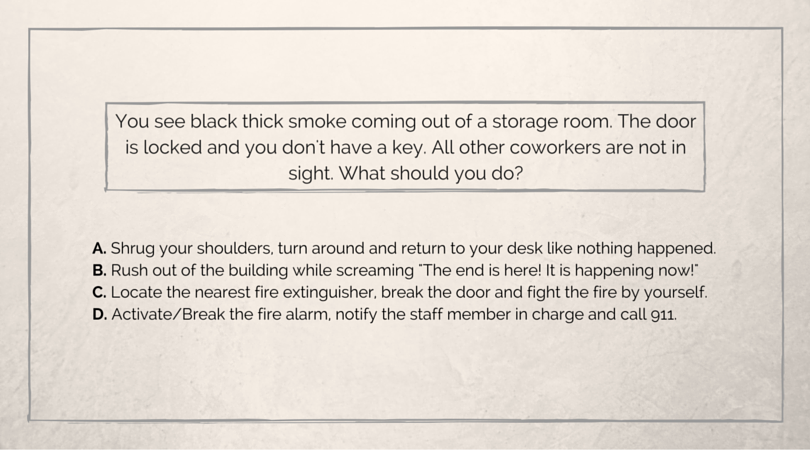
For each option you choose in this scenario, the learning management system will offer customized feedback, which will help you decide if you made the right choice or not:
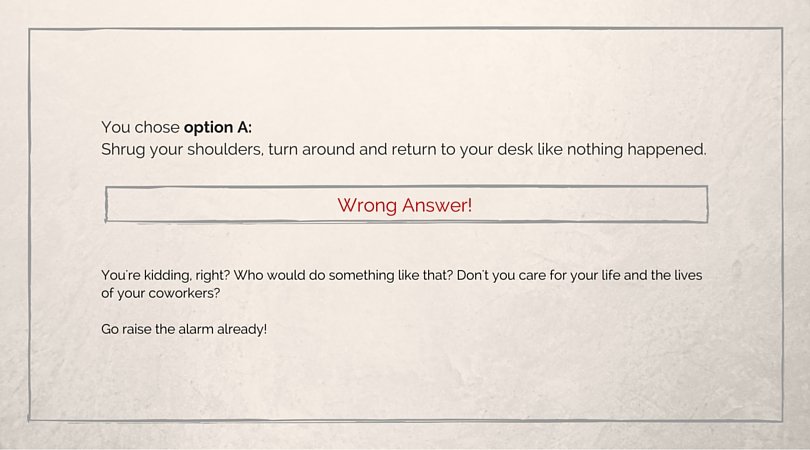
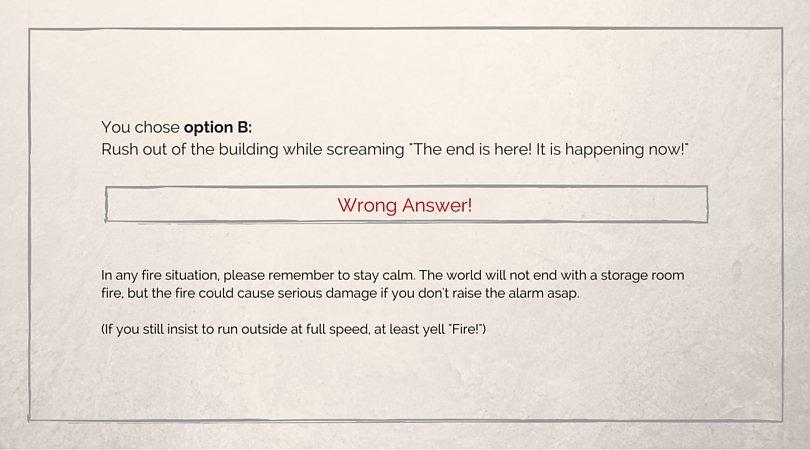
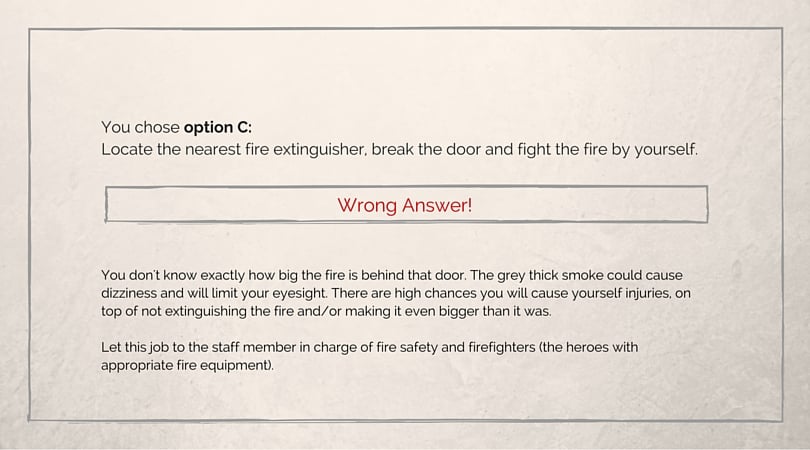
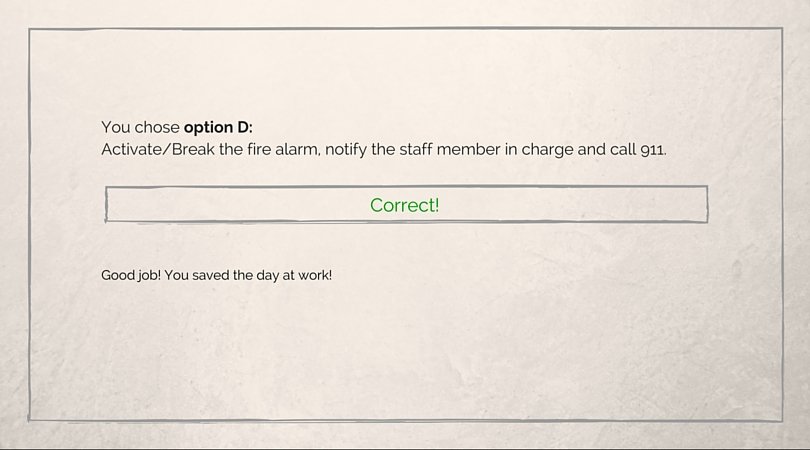
Next, you could go to the next scenario, back to the question you chose a wrong answer to, or at the beginning of the module, to start it again from scratch.
Branching Scenarios
While dealing with a fire at the workplace may be quite straightforward, things are not the same in many business situations.
Maybe you’re in the food industry and you need to know when exactly a certain spice can ruin a recipe and when the same spice can make it perfect, all without ruining any dish. Maybe you work in healthcare and you need to correctly diagnose a patient before applying any treatment; it would be perfect if you could test any option without actually jeopardizing a life. Maybe you are a sales person and have to practice sales pitches for a dozen different clients/prospects. In all these situations — and many, many more — branching scenarios prove to be really useful.
You can make assumptions, test them, and remember to correct them if necessary the next time you find yourself in a similar setting. You see the consequences of your decisions sometimes instantly and learn how to carry them through — follow the initial path or turn to a better one. At the same time, you develop your critical thinking and problem solving skills.
Branching scenarios in corporate e-learning cover a wide area of applicability. Therefore, this complex topic deserves its own blog entry, so check it out!
The bottom line for scenario-based learning is that it can help you, the trainee, to better remember the learning materials, take the right decisions in real life situations, and therefore improve your work productivity. You win, your instructional designer wins, your company wins.
What’s your stance on scenario-based learning? Have you tried it? Did you find it useful?







